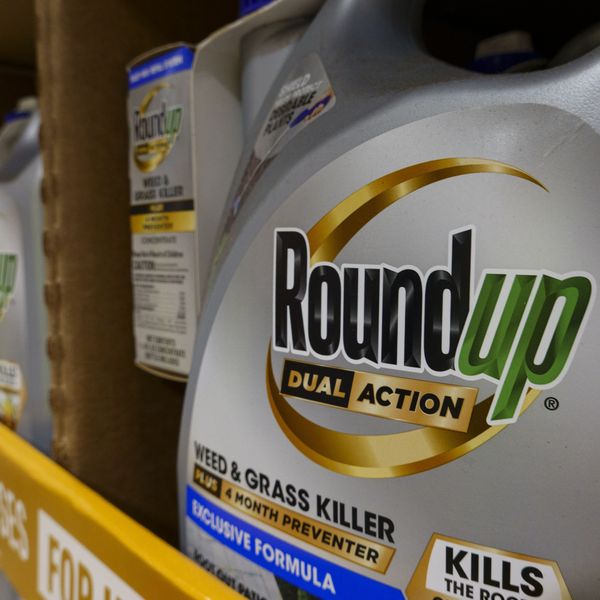Is Fracking Coming to the Arctic?
Geologist "highlights the potential of Alaska’s shale resources" at Houston conference
An energy expert hinted at Alaska's future as a fracking zone at the Arctic Technology Conference in Houston.
At the December 3-5 conference, whose tagline is Challenges for Today, Opportunities for Tomorrow, a geologist "highlight[ed] the potential of Alaska's shale resources."
Zain Shauk reports at Fuel Fix:
Amid talk of ice-breaking boats and tools for Arctic oil spill cleanup, the shale revolution found its way into a Houston conference Wednesday, with an expert highlighting the potential of Alaska's shale resources.
The state has an estimated potential of up to 2 billion barrels of oil from shale and more than 80 trillion cubic feet of natural gas, said David Houseknecht, a geologist for the U.S. Geological Survey.
In some areas, the characteristics of rocks, even on the surface, show the likelihood of oil finds, Houseknecht said.
"When you break these open, they stink of oil. So definitely a heavily oil-charged system," he said of a specific geologic region.
Sponsors of the conference included energy giants ExxonMobil, Shell and Total.
Environmental watchdogs have long pointed to the environmental dangers of the controversial energy-extracting process, including toxic waste with unknown chemicals, contamination of aquifers and air pollution.
An Urgent Message From Our Co-Founder
Dear Common Dreams reader, The U.S. is on a fast track to authoritarianism like nothing I've ever seen. Meanwhile, corporate news outlets are utterly capitulating to Trump, twisting their coverage to avoid drawing his ire while lining up to stuff cash in his pockets. That's why I believe that Common Dreams is doing the best and most consequential reporting that we've ever done. Our small but mighty team is a progressive reporting powerhouse, covering the news every day that the corporate media never will. Our mission has always been simple: To inform. To inspire. And to ignite change for the common good. Now here's the key piece that I want all our readers to understand: None of this would be possible without your financial support. That's not just some fundraising cliche. It's the absolute and literal truth. We don't accept corporate advertising and never will. We don't have a paywall because we don't think people should be blocked from critical news based on their ability to pay. Everything we do is funded by the donations of readers like you. Will you donate now to help power the nonprofit, independent reporting of Common Dreams? Thank you for being a vital member of our community. Together, we can keep independent journalism alive when it’s needed most. - Craig Brown, Co-founder |
An energy expert hinted at Alaska's future as a fracking zone at the Arctic Technology Conference in Houston.
At the December 3-5 conference, whose tagline is Challenges for Today, Opportunities for Tomorrow, a geologist "highlight[ed] the potential of Alaska's shale resources."
Zain Shauk reports at Fuel Fix:
Amid talk of ice-breaking boats and tools for Arctic oil spill cleanup, the shale revolution found its way into a Houston conference Wednesday, with an expert highlighting the potential of Alaska's shale resources.
The state has an estimated potential of up to 2 billion barrels of oil from shale and more than 80 trillion cubic feet of natural gas, said David Houseknecht, a geologist for the U.S. Geological Survey.
In some areas, the characteristics of rocks, even on the surface, show the likelihood of oil finds, Houseknecht said.
"When you break these open, they stink of oil. So definitely a heavily oil-charged system," he said of a specific geologic region.
Sponsors of the conference included energy giants ExxonMobil, Shell and Total.
Environmental watchdogs have long pointed to the environmental dangers of the controversial energy-extracting process, including toxic waste with unknown chemicals, contamination of aquifers and air pollution.
An energy expert hinted at Alaska's future as a fracking zone at the Arctic Technology Conference in Houston.
At the December 3-5 conference, whose tagline is Challenges for Today, Opportunities for Tomorrow, a geologist "highlight[ed] the potential of Alaska's shale resources."
Zain Shauk reports at Fuel Fix:
Amid talk of ice-breaking boats and tools for Arctic oil spill cleanup, the shale revolution found its way into a Houston conference Wednesday, with an expert highlighting the potential of Alaska's shale resources.
The state has an estimated potential of up to 2 billion barrels of oil from shale and more than 80 trillion cubic feet of natural gas, said David Houseknecht, a geologist for the U.S. Geological Survey.
In some areas, the characteristics of rocks, even on the surface, show the likelihood of oil finds, Houseknecht said.
"When you break these open, they stink of oil. So definitely a heavily oil-charged system," he said of a specific geologic region.
Sponsors of the conference included energy giants ExxonMobil, Shell and Total.
Environmental watchdogs have long pointed to the environmental dangers of the controversial energy-extracting process, including toxic waste with unknown chemicals, contamination of aquifers and air pollution.

